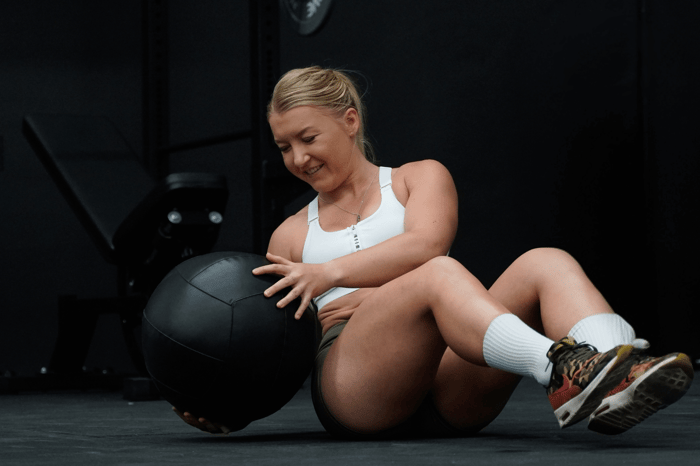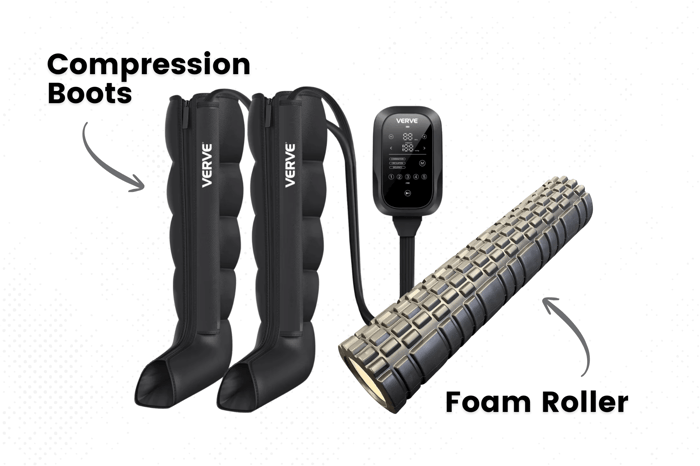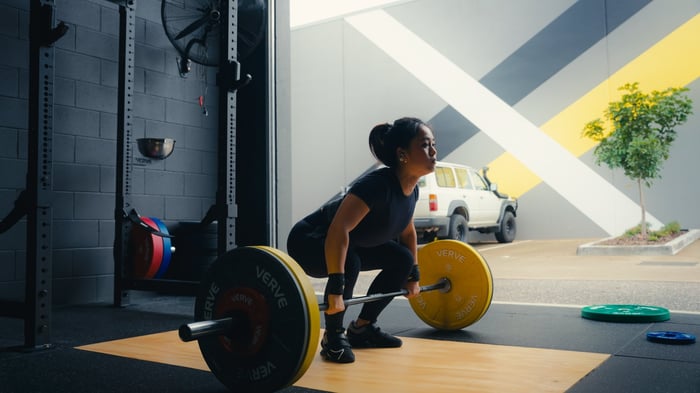Build a Stronger Core with the Right Tools and the Right Progressions
When it comes to core training, not all exercises are created equal. The core isn’t just about six-pack abs; it’s your body’s powerhouse for stability, movement, and injury prevention. Whether you’re just getting started or levelling up your training, using the right gear at the right time makes a huge difference.
In this blog, we’ll break down core exercises into levels, from bodyweight to dumbbells, kettlebells, and cables, and explain what each one targets, how to do them properly, and when to move up in difficulty.
1. Crunch-Based Core Training
Primary Muscles Worked: Rectus abdominis (aka the six-pack), hip flexors, transverse abdominis
Crunches are foundational for building abdominal endurance and muscle control. But to really develop strength and progression, you need more than just reps on the mat.
Bicycle Crunch (Bodyweight – Beginner)
What It Targets: Upper & lower abs + obliques
How to Do It:
1. Lie on your back with hands behind your head.
2. Lift your shoulders and legs off the floor.
3. Bring opposite elbow to knee while extending the other leg.
4. Alternate sides in a slow and controlled motion.
Why It Works: Great starting point for learning how to brace the core and control rotational movement.
Weighted Jack-Knives (Dumbbell or Kettlebell – Intermediate)
What It Targets: Entire abdominal wall, especially lower abs
How to Do It:
1. Lie flat holding a dumbbell or kettlebell overhead.
2. Simultaneously raise legs and arms to meet above the hips.
3. Control the descent without losing tension.
Pro Tip: Keep the lower back pressed into the ground to protect your spine.
Cable Crunch (Cable Machine – Advanced)
What It Targets: Deep abdominal contraction + upper abs
How to Do It:
1. Set a rope attachment on a high pulley.
2. Kneel and hold the rope at either side of your head.
3. Crunch downward, rounding your spine and bringing elbows to your knees.
Why It’s Effective: The cable provides consistent resistance throughout the movement, making it ideal for building strength and muscle in your abs.
2. Rotation & Anti-Rotation Training
Primary Muscles Worked: Obliques, transverse abdominis, erector spinae (lower back), deep stabilisers
Rotational core strength is key for sports performance and injury prevention. The stronger your rotation control, the better your balance and power output.
Russian Twist (Bodyweight or Kettlebell – Beginner to Intermediate)
What It Targets: Obliques and hip stabilisers
How to Do It:
1. Sit with knees bent, heels lightly touching the floor.
2. Hold a weight or clasp hands together.
3. Rotate your torso side-to-side without swinging.
Form Focus: Keep your chest tall and move through the ribcage, not just the arms.
Landmine Rotations (Barbell + Landmine – Advanced)
What It Targets: Rotational power, anti-rotational control
How to Do It:
1. Place one end of a barbell in a landmine attachment.
2. Hold the other end with both hands.
3. In an athletic stance, rotate the bar from hip to hip.
Why It’s Powerful: Combines resistance and control for a full-body core burn, especially useful for athletes and rotational sports.
Cable Oblique Twist (also called Standing Cable Woodchopper – Intermediate)
What It Targets: Obliques, transverse abdominis, spinal stabilisers
How to Do It:
1. Set a D-handle on a cable stack at chest or high level.
2. Stand side-on, grab the handle with both hands.
3. Pull diagonally across your body (e.g. high left to low right).
Control Is Key: Don’t swing. Rotate through your torso while keeping your hips square.
3. Oblique & Lateral Core Training
Primary Muscles Worked: Obliques, quadratus lumborum (deep lower back), transverse abdominis
Training the sides of your core builds better balance, stronger lifts, and real-world functional strength.
Ankle Taps (Bodyweight – Beginner)
What It Targets: Obliques
How to Do It:
1. Lie flat with knees bent and feet on the floor.
2. Crunch slightly up and reach side to side, tapping your ankles.
Simple but Effective: Builds side-to-side control without any gear.
Kettlebell Oblique Lean (also called Suitcase Side Bend – Intermediate)
What It Targets: Obliques, spinal stabilisers
How to Do It:
1. Stand tall with a kettlebell in one hand.
2. Slowly bend sideways, then return to centre.
Why It Works: Trains the obliques in a loaded stretch, promoting balance and anti-lateral flexion strength.
Cable Pallof Press (Cable Machine – Advanced)
What It Targets: Transverse abdominis, obliques, deep core stabilisers
How to Do It:
1. Set a cable at chest height, stand side-on.
2. Hold the handle at your chest and press it straight out.
3. Resist the pull of the cable. Don’t rotate.
This is Core Control: A powerful anti-rotation drill to bulletproof your spine and improve posture.
How to Progress
Start with bodyweight to build awareness and endurance. Add load (dumbbells, kettlebells) as you improve. Graduate to cables and landmines for controlled resistance, advanced tension, and powerful core development.
Train smarter, not just harder, by matching your gear to your ability level.
Need the Right Equipment?
From cable machines to landmine attachments, dumbbells, and kettlebells, VERVE has everything you need to train your core at every level.




